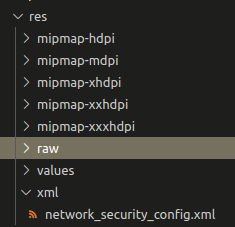Your app build.gradle will have information about the debug or release apk you will clreate.
check the proguard rules in case you get errors while creating the release app via the
./gradlew assembleRelease or ./gradlew bundleRelease
Bundle release will create .aab file which google likes and will create architecture specific builds..
so that the google android platform identifies on run time, what kind of device is requesting the apk
and it pushed only that build , it reduces the over all size to 20 percent of actual size.
If your apk size is 30mb and you use enable architecture specific build in proguard rules
*/
def enableSeparateBuildPerCPUArchitecture = false // if you set true you will get 4 different builds for different architectures... either use this
def enableSeparateBuildPerCPUArchitecture = false // if you set true you will get 4 different builds for different architectures... either use this
or make the bundle of release and let google decide which build to push ..
/**
* Run Proguard to shrink the Java bytecode in release builds.
*/
def enableProguardInReleaseBuilds = true // if u use this, you might hit the class not found errors on the logcat console while doing adb logcat ..
/**
* Run Proguard to shrink the Java bytecode in release builds.
*/
def enableProguardInReleaseBuilds = true // if u use this, you might hit the class not found errors on the logcat console while doing adb logcat ..
you will have to change pro guard rules to skip those files for which you are getting class not found errors in release apks .. or crashes..
Every release you make to your exisiting app should have the bundle version code and version number greater
than the older artifact, else it will be shadowed and new devices will never get your updated.
versionCode 3434
versionName "1.5"
versionName "1.5"
Also let google manage your keys... signing keys ... please dont confuse sha1 fingerprints with signing keys...
Your sha1 fingerprints are used to restrict .. google maps api key access as well as firebase api key restrictions...

